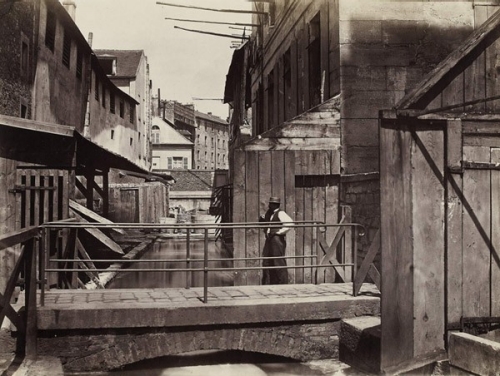The neighborhood around the Bièvre, a tributary of the Seine that enters Paris from the southeast, was the site of many small factories, especially leather works, dye shops, and laundries that dumped copious amounts of chemical waste into the river’s once-clear waters. When Marville photographed the area in the early 1860s, city officials—concerned with the health hazards and “terrible stench” emanating from the Bièvre—were planning to tackle the problem. (The waterway was eventually covered over at the very end of the 19th century and now runs underground, through the sewers.) The neighborhood around the Bièvre crystallized opposing attitudes toward Old Paris, which was viewed either as a colorful working-class community rich in history or as a putrid, dangerous slum crying out for modernization.
La Bièvre

Banks of the Bièvre River at the Bottom of the rue des Gobelins (fifth arrondissement), c. 1862
albumen print from collodion negative
Musée Carnavalet, Paris
Image © Musée Carnavalet / Roger-Viollet